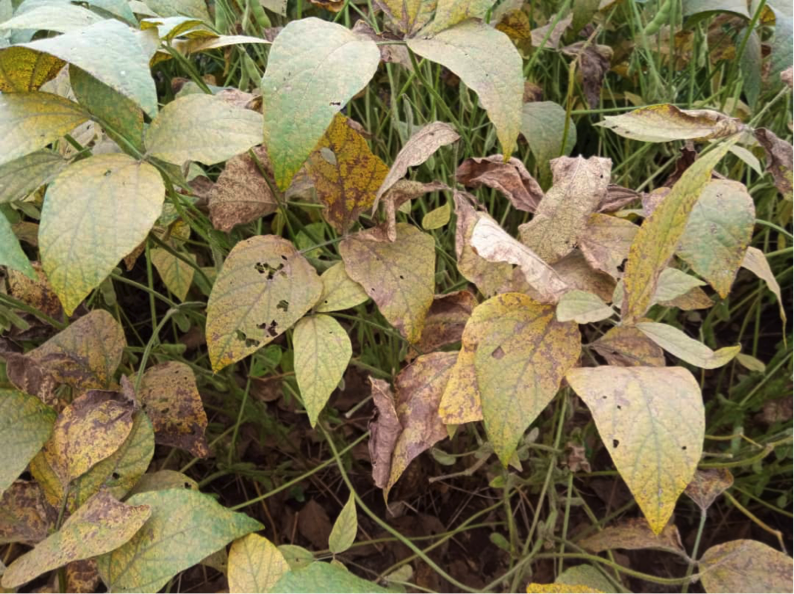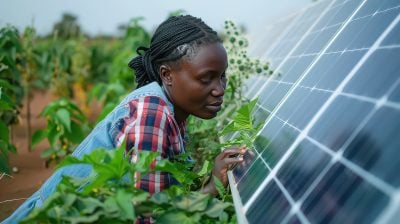Looking out across a crop nursery filled with diseased plants, you’d be forgiven for thinking there is something wrong.
However, these are no ordinary nurseries – they are “disease nurseries” filled with crop samples and breeding lines gathered from around the world, and they play a vital role in helping scientists to identify varieties that can withstand a disease outbreak.
With the impact of climate change accelerating the spread of plant diseases and putting at least 40% of global crop production at risk, preventing a plant pandemic is as essential as vaccinating the world against Covid-19 and requires even more ongoing international cooperation to do so.
As demonstrated during the Covid-19 pandemic, sharing information about disease spread, particularly of new and emerging variants, has been critical to managing the virus impact, and it is no different with crops.
By sharing plant material around the world, researchers can expose multiple varieties to prevalent diseases in the same, controlled location, allowing them to select and recommend the resilient varieties to national breeding programmes.
Reducing threat of crop losses
For example, the nurseries established by the International Institute of Tropical Agriculture (IITA) and the Feed the Future Soybean Innovation Lab (SIL) have already identified three different soybean lines that are resilient to soybean rust and frogeye leaf spot and can help reduce the threat of crop losses for farmers in Kenya and Ethiopia.

Soybean is a key source of plant protein for many communities in developing countries. However, diseases such as soybean rust can cause yield losses of up to 80% for farmers, not only disrupting their livelihoods, but severely impacting food security in affected communities.
Building trust
To further bring down the likelihood of a future plant pandemic in Africa, governments, researchers, and regulatory authorities need to work collaboratively at a national, regional, and international level to streamline efforts, including disease nurseries, that are already working to avoid the outbreak of such an event.
Firstly, to help reduce the likelihood of any future plant pandemic, governments need to build greater levels of trust among other countries and partners. When the stakes are so high, some countries are understandably reluctant to import crop materials for fear of introducing damaging plant diseases.
Yet, partners like CGIAR are engaging with governments and institutions across Africa to demonstrate not only the safety and rigour of these exchanges, but the clear benefits they can bring for researchers working to build resilient food systems across the whole African continent.
By rolling out more soybean rust disease nurseries to Ethiopia, Kenya, Malawi, Uganda, Zambia and Zimbabwe, scientists can capitalise on insights across geographies that benefit Africa more broadly.
Harmonised approaches
Secondly, preventing a future plant pandemic will require a harmonised approach through which germplasm, or seeds and cuttings, is transferred between countries, reducing existing barriers to this process.
Despite the long history of international breeding programmes, no uniform approach exists for the transfer of germplasm, which is the foundation stone of plant breeding and research, between countries.
However, a new initiative called “GreenPass” for safe germplasm exchange being developed by the CGIAR Germplasm Health programme could help speed up and harmonise the international movement of plant genetic material, and by extension, increase the ability of scientists to research and respond to emerging plant diseases, wherever they may appear in the world.
The GreenPass initiative will ensure countries can have confidence in the safety of the germplasm that is crossing their borders, whilst also ensuring these important resources find their way into the hands of researchers more quickly and efficiently.
Strengthening national programmes
Finally, in preventing a future plant pandemic in Africa, governments must strengthen the national plant health programmes and also invest in common plant health management systems, which are vital for tracking, and ultimately responding to, emerging plant diseases.
The Covid-19 pandemic showed that common access to accurate information on the disease and its emerging variants was vital in guiding national responses. The development of shared plant health databases, therefore, will mean the information is more accessible across borders, helping authorities to monitor, prepare for, and respond to, emerging crop pests, before they can severely damage their agricultural systems.
In tackling Africa’s most pressing challenges, including the widespread issues of food security, poverty and climate adaptation, countries share many of the same risks and barriers. In building resistance to emerging plant diseases, it is time to turn those commonalities into action.
The movement towards more integrated agricultural research and innovation, led by CGIAR, will compound the value of shared knowledge, regional cooperation, and economies of scale to ensure that no one is left behind.
Nteranya Sanginga, is director general of the International Institute of Tropical Agriculture.
Want to continue reading? Subscribe today.
You've read all your free articles for this month! Subscribe now to enjoy full access to our content.
Digital Monthly
£8.00 / month
Receive full unlimited access to our articles, opinions, podcasts and more.
Digital Yearly
£70.00 / year
Our best value offer - save £26 and gain access to all of our digital content for an entire year!
 Sign in with Google
Sign in with Google 



